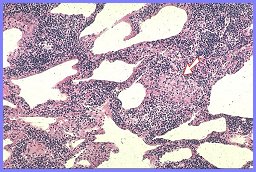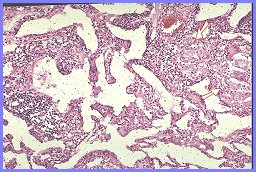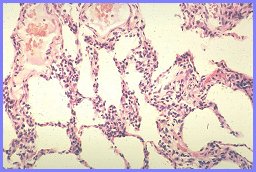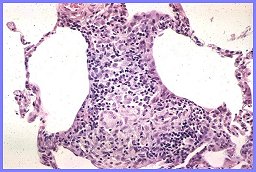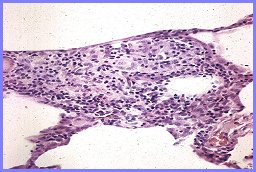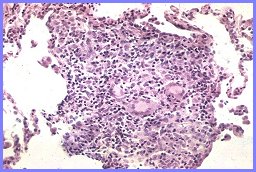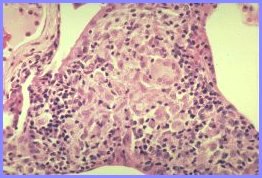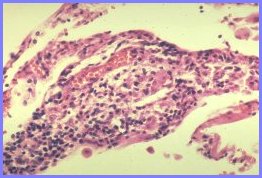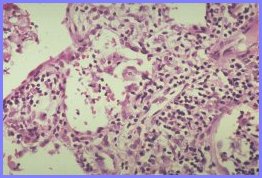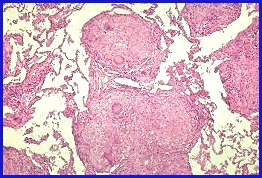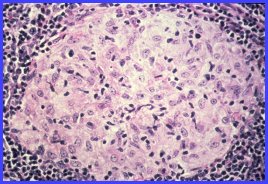Granuloma Development
The initiating event in granuloma formation, except for foreign body granulomas, is believed to be the deposition within tissue of a relatively indigestible antigenic material which initiates a delayed type (Type IV) hypersensitivity reaction. The complex interaction between antigen- presenting mononuclear phagocytes and T lymphocytes, mediated by a variety of cytokines, initially results in T lymphocyte proliferation and activation at sites of antigen deposition. The lymphocytes are predominantly T-helper cells. This phase of granuloma development has been particularly well documented in the lungs in sarcoidosis and is represented by the presence of "non- granulomatous interstitial pneumonitis"(NGIP) or "alveolitis". This lesion is best seen in open lung biopsies and may be diagnosed with bronchoalveolar lavage. Recruitment of macrophages from the circulation, their attraction to and retention at sites of antigen deposition, their maturation into epithelioid cells, and the ultimate formation of mature granulomas occurs under the influence of lymphokines produced by activated T-helper cells.
Although it is generally accepted that cell-mediated immunity is required for formation of epitheliod granulomas, granuloma formation independent of cell-mediated immunity has been reported in experimental animals and probably occurs in patients with AIDS. Click here to see a possible example of this.
The photos on this page illustrate the sequence of development of granulomas in sarcoidosis beginning with NGIP/Alveolitis and terminating with formation of mature granulomas.
Click on photo to see a larger image
NGIP/Alveolitis
NGIP/Alveolitis
NGIP/Alveolitis. Small collections of macrophages at arrows. Very early granuloma formation.
NGIP/Alveolitis. Small collection of macrophages. Very early granuloma formation.
NGIP/Alveolitis. Larger collection of macrophages admixed with lymphocytes. Evolving granuloma.
NGIP/Alveolitis. Poorly circumscribed collection of macrophages and multinucleate giant cells. Evolving granuloma.
NGIP/Alveolitis. .Later phase of granuloma formation. Lesion becoming more compact and circumscribed
NGIP/Alveolitis. .Later phase of granuloma formation. Lesion becoming more compact and circumscribed.
Advanced phase of granuloma evolution. A compact, organized collection of macrophages/ epithelioid cells with a peripheral mantle of lymphocytes.
NGIP/Alveolitis with well-formed granulomas at arrows.
Well-formed, mature granulomas with no evidence of pre-existing NGIP/Alveolitis.
NGIP/Alveolitis with well-formed granuloma at arrow.
Fully mature non-necrotizing granuloma.

